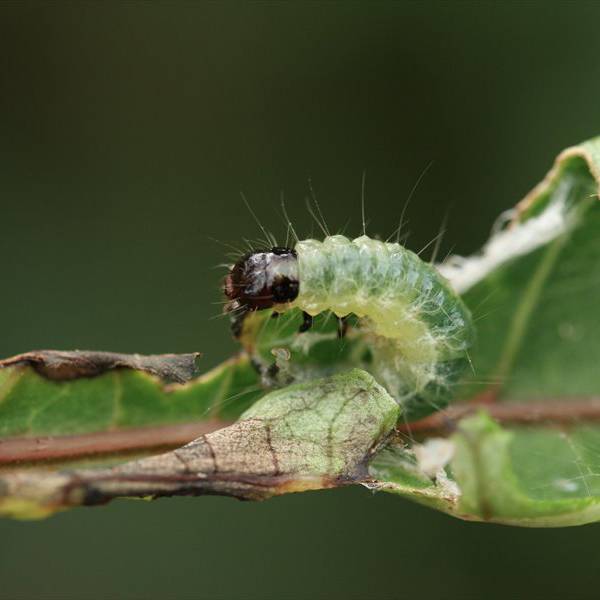Pests Guide

Monitoring should begin early.
Look for folded or rolled leaves among the plants.
The leaves may be discolored, there may be early spring defoliation, or the leaves may show some feeding damage such as small holes in the leaves.
Pick the rolled leaves carefully and examine for leaf roller larvae.
If the rolled leaves do not have any larvae present, it is too late to control the larvae.
Larvae also feed within berries and fruit as the worm in your apple, and may not be noticed until harvest time, or at consumption
Larvae may seal leaf surfaces together and live between them or fold leaves together and live in the folds.
Young larvae feed on unfolded leaves.
Older larvae fold the leaves in half and hold them in place with webbing.
Damage results from the larvae feeding within the folded, rolled or webbed leaves, causing them to turn brown and die.
Diverse gardens that also attract many natural native predators by mingling varying plants and flowers blooming at different intervals throughout the season are advantageous.
Proper sanitary practices are vital to the health of your garden.
Proper sanitation can help to ensure disease-free pest-free and productive gardens.
Try to keep the garden free of any diseased dead or damaged plant materials.
Remove cuttings from pruning and trimming and either destroy them – if diseased, or send them to the compost pile.
Leaving rotting fruits and vegetables in the garden is like a written invitation to unwanted pests and diseases.
If a diseased or dead plant part has to be cut, the microorganism that caused the problem is probably on the tool you just used.
Like a surgeon, sterilize all tools by washing in soap and water – rubbing alcohol wouldn’t hurt either.
If you pinch off diseased plant parts, wash hands before handling any other plants.
Keep Weeds under control.
Till the soil in the spring before planting to expose and kill larvae that wintered over in the soil.